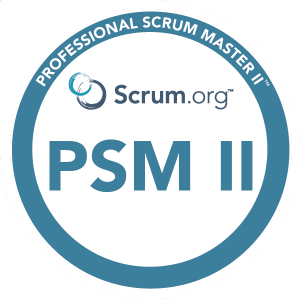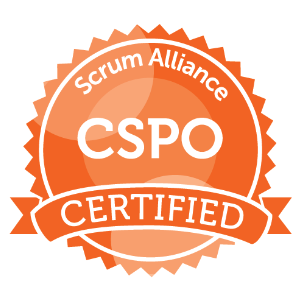
If I had a penny for every time I brought in a new group of engineers to work on a project, and had to debate with engineers, on the merits of using a proper project management tool, beyond Trello or GitHub issues. As a program or project manager, you want to be able to track your project at the right fidelity, but engineers want to focus on their engineering work without having to spend time on administrative duties, such as updating project statuses and navigating heavy duty PM workflows and interfaces. As a former engineer, I get that, and as a project manager, I also understand that prying meaningful English words out of engineers is a never-ending challenge. If I had a penny for every time I brought in a new group of engineers to work on a project, and had to debate with engineers, on the merits of using a proper project management tool, beyond Trello or GitHub issues. As a program or project manager, you want to be able to track your project at the right fidelity, but engineers want to focus on their engineering work without having to spend time on administrative duties, such as updating project statuses and navigating heavy duty PM workflows and interfaces. As a former engineer, I get that, and as a project manager, I also understand that prying meaningful English words out of engineers is a never-ending challenge.If I had a penny for every time I brought in a new group of engineers to work on a project, and had to debate with engineers, on the merits of using a proper project management tool, beyond Trello or GitHub issues. As a program or project manager, you want to be able to track your project at the right fidelity, but engineers want to focus on their engineering work without having to spend time on administrative duties, such as updating project statuses and navigating heavy duty PM workflows and interfaces. As a former engineer, I get that, and as a project manager, I also understand that prying meaningful English words out of engineers is a never-ending challenge. If I had a penny for every time I brought in a new group of engineers to work on a project, and had to debate with engineers, on the merits of using a proper project management tool, beyond Trello or GitHub issues. As a program or project manager, you want to be able to track your project at the right fidelity, but engineers want to focus on their engineering work without having to spend time on administrative duties, such as updating project statuses and navigating heavy duty PM workflows and interfaces. As a former engineer, I get that, and as a project manager, I also understand that prying meaningful English words out of engineers is a never-ending challenge.
Well, thankfully, going into that first meeting and saying we will be using Jira, doesn’t have to end in a gasp from the room, or even worse, an outright rejection. All it takes, is a calm and collective explanation of what you need, empathize with what they need, and then propose a Jira solution compromise that will leave everyone happy. How you ask? Let me tell you…
What is JIRA?
For teams who practice agile methodologies, Jira Software provides scrum and kanban boards out-of-the box. Boards are task management hubs, where tasks are mapped to customizable workflows. Boards provide transparency across team work and visibility into the status of every work item. Time tracking capabilities, and real-time performance reports (burn-up/down charts, sprint reports, velocity charts) enable teams to closely monitor their productivity over time. Find your agile boards in Jira Software Cloud classic projects.
Atlassian
Part of Atlassian’s suite of project management tools, JIRA is a heavy work management platform for managing everything from tracking bugs and issues to requirements and test case management, encouraging an agile software development culture. Built as a central hub for coding, collaboration and release staging, JIRA is the bread and butter for project and program managers.
Essentially JIRA enables project managers to easily track the end-to-end workflow from business requirements, to issues and tasks, to building reports for stakeholders. The one area that JIRA has been a point of hesitancy, is with the engineering department. Engineers are outright afraid of using JIRA, and feel that it detracts from their day-to-day coding efforts. So what do you do? Do you succumb to their requests to use Git Issues, or another git-centric tool? Perhaps use a more simplistic Kanban board tool like Trello?
Have the best of both worlds
The answer is simple. You keep JIRA as it is your bread and butter, it is what will help you get the right level of granularity when it comes to reporting on project progress to your stakeholders, but obfuscate the complexities of JIRA from your engineers.
Your engineers are already accustomed to writing git commit messages, so by integrating your JIRA instance with your GitLab or GitHub code repository, all you have to do is instruct your engineers to use Smart Commits to directly comment on JIRA issues or transition an issue from one status to another. The syntax is quite simple:
<ignored text> <ISSUE_KEY> <ignored text> #<COMMAND> <optional COMMAND_ARGUMENTS>
The three commands you can use in your smart commit messages are
- `commit`
- `time`
- `transition`
The following two examples show you how to comment on an issue, which would subsequently show up as a JIRA comment, and transition an issue, respectively:
JRA-34 #comment corrected indent issue
JRA-090 #close #comment Fixed this today
In Summary
And there you have it, by enabling Smart Commits, you don’t have to compromise between having to choose a dumbed down project management tool, and engineers actually posting timely updates. Leveraging git commit messages, you have a great conduit for having the right fidelity of information to report to your stakeholders. For more information, I would encourage you to visit https://support.atlassian.com/bitbucket-cloud/docs/use-smart-commits/




One thought on “Convincing engineers to embrace tools like JIRA”